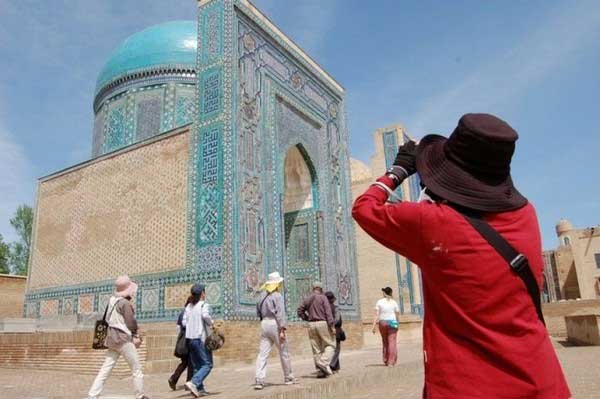Bukhara is a city where many thinkers, scientists, theologians, and poets lived. In the Bukhara region there are seven holy feasts of Bukhara. It is they who are becoming the most popular lovers of pilgrim tourism.
According to the rules, experts of the tour operator ANUR TUR tell, the tour begins with the grave of Sheikh Abdul Abd Al-Khalik Gijduvani, who founded the school of Central Asian Sufism. He always adhered to the rule that every imam must necessarily own some kind of craft. Not far from dahma of Gijduvani is the Madrassah of Ulugbek, next to it there is a new mosque where pilgrims can pray.
Muhammad Arifa Ar Revgari very early on the path of Sufism, and at age 19 he already taught philosophy. His manuscripts “Nafahat ul-uns” and “Arifnoma” are the only written testimonies about the life of the famous Sufi, after reading it, it becomes clear that Hodja Arif Revgari was considered one of the most worthy successors of the traditions and practices of “Hajjagan”.
Hodja Mahmud Anjir Fagnawi was engaged in gardening, he was the most famous Sufi of his time. Fagnawi was the successor of the spiritual Sufi tradition. In perfect possession of the carpenter’s craft, this he earned his living. Not far from the grave of the saint a beautiful mausoleum was erected, a mosque with a well with holy water was built nearby, where pilgrims often come to make a prayer.
The next pilgrims visit the place of repose of one of the most famous spiritual guides – Hodja Azizon (Ali Romitani) – the performer of desires. In the people he is known as Azizon – Venerable Sheikh. He was born in 1195 in Kurgan and worked as a weaver. It was thanks to him that the Mongolian khans accepted Islam, considering them miracle-workers.
Further, the road leads to the grave of the great Sufi Bobo as-Samosi, who predicted the birth of Bahauddin Naqshbandi. It was about him Bobo as-Samosi said: “It will be very short time, and its fragrance will spread all over the world, and it will become “mushkil gush” – “revealing the difficulties.” Today, the tomb of St. Bobo as-Samosi is a place of worship for hundreds of thousands of Muslims from all over the world.
Said Amir Al Kupol Mausoleum is in the village of Sukhor. The building is a mosque, a mausoleum and a garden with a flower garden. “Dome” means “potter”, it was this craft that he mastered perfectly.
And the most interesting tour ends with a visit to the mausoleum of Bahauddin Naqshbandi, the birth of which was predicted by Bobo as-Samosi. Naqshbandi was born in 1318 in the village of Hinduvan. As a spiritual teacher, he was a supporter of asceticism. In his opinion, the Sufi had to earn his living by working exclusively. Bahauddin himself mastered several professions – weaver, potter and metal carver. He was the role model for many vagrants who, following his example, began to earn their living by craft.
Now there is a majestic mausoleum. Until now, the burial site of the holy Sufi is visited by thousands of pilgrims. After all, according to legend, if you touch the memorial three times, then visiting the holy rest is equated with “hajj” in Mecca.
